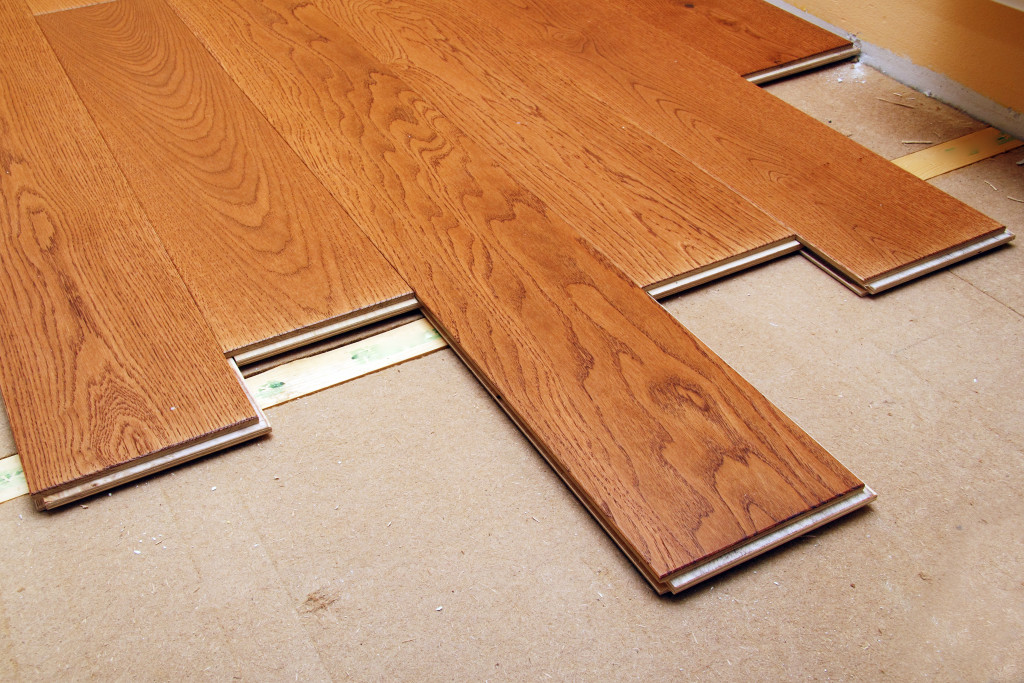- Plan and prioritize your renovation goals by determining the purpose of your project and setting a realistic budget.
- Research different materials available and source quality products that will last long-term.
- Schedule tasks strategically and plan for unexpected delays.
- Seek expert opinions to ensure local regulations and building codes are followed.
- Manage waste efficiently by hiring a professional skip for easy disposal.
Home renovations can be exhilarating. They offer a fresh look, increase property value, and allow homeowners to customize spaces according to their tastes. However, the process can also be overwhelming, from conceptualizing the design to managing unforeseen challenges. But with proper preparation and knowledge, the journey can be smoother and less stressful. Below are five actionable tips to guide you through your renovation journey, ensuring efficiency, cost-effectiveness, and satisfaction.
1. Plan and Prioritize Your Renovation Goals
Diving headfirst without a plan is a common mistake.
Firstly, determine the purpose of your renovation. Are you upgrading for aesthetic reasons, functionality, or both? Once your goals are clear, list the tasks in order of priority. For instance, deciding whether countertops or cabinets come first if you renovate the kitchen. By ranking tasks, you ensure that the essential renovations are tackled first, especially if you’re working with a limited budget or timeframe.
Moreover, set a realistic budget for each phase of your project. Always account for unexpected expenses by setting aside a contingency fund, typically 10-20% of your total budget.
2. Research and Source Quality Materials
Not all materials are created equal.
Start your renovation with thorough research. Familiarize yourself with the types of materials available and their pros and cons. While staying within budget is crucial, investing in quality can save money in the long run by reducing the need for repairs or replacements.
Here are some materials for your home design:
Natural Stone
Natural stone, such as granite, marble, or slate, is popular for countertops and floors due to its durability and timeless appeal. Each stone type offers a unique blend of colors and patterns, adding an element of luxury to your space. However, remember that natural stone requires regular sealing to maintain its luster and prevent staining.
Engineered Wood

Engineered wood is an excellent alternative to hardwood flooring. It offers the same warm aesthetic but is more resistant to humidity and temperature changes. The top layer features real wood, while the lower layers are crafted from high-quality plywood, enhancing stability and reducing the risk of warping or shrinking.
Ceramic and Porcelain Tiles
Ceramic and porcelain tiles are versatile options in various home environments. They are highly moisture-resistant, making them ideal for bathrooms and kitchens. Available in a wide range of colors, textures, and designs, these tiles can complement any home design.
High-Quality Paint
Investing in high-quality paint can make a significant difference in the final result of a renovation. Quality paint has better pigments and resins, ensuring more vibrant colors and a longer-lasting finish. While it might be more expensive upfront, it often requires fewer coats and lasts longer, resulting in cost savings over time.
3. Schedule Tasks Strategically
A well-thought-out timeline is vital.
When planning, consider the sequence of tasks. Some renovations need to precede others. For example, completing plumbing or electrical work before painting walls or installing cabinets is wise. This way, you won’t risk damaging completed work.
Furthermore, be aware of each task’s time and buffer some extra days for unforeseen delays. If you’re doing multiple rooms, decide whether you’ll tackle them simultaneously or one at a time. The latter can be less chaotic, allowing parts of your home to remain functional.
4. Seek Expert Opinions

While DIY has its charm, professionals can offer invaluable insights.
If certain aspects of your renovation project seem too daunting, don’t hesitate to consult experts. An interior designer can help you optimize space and aesthetics, while a structural engineer can guide you on matters concerning the safety and integrity of your home.
Also, always ensure you comply with local regulations and building codes. Some renovations might require permits, and professionals can guide you on when and how to obtain them.
5. Manage Waste Efficiently
Renovations generate waste, and managing it can be a challenge.
Amidst the excitement of renovating, many homeowners overlook the debris and waste that accumulate. From discarded materials to old fixtures, the pile grows rapidly. Rather than letting it become an obstacle, consider hiring a professional skip. These large waste containers make disposal convenient and organized. With a skip on-site, you can easily discard unwanted materials, ensuring your workspace remains tidy and safe. Plus, professional skip providers handle the disposal, ensuring waste is managed responsibly, which is both an environmental and logistical relief.
In Summary
Your home renovation project doesn’t have to be a series of endless challenges. You can simplify the process by planning, sourcing quality materials, sequencing tasks correctly, seeking expert opinions, and efficiently managing waste with solutions like a professional skip. Remember, the goal is a transformed space and an enjoyable renovation journey. Taking the time to prepare and strategize will undoubtedly pay off.




